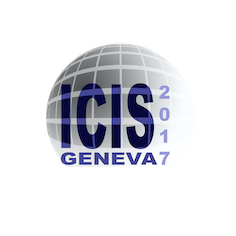Speakers
Description
The magnetic filter is an outmost important part of a $\text{H}^-$ plasma ion source since it must reduce electron transport, density, and temperature, apparently with no clear physical indication of a saturation criteria. In the early 2016 configuration of NIO1 (Negative Ion Optimization phase 1), an average of B$_x$=30 G dipole field was obtained in the extraction region with a current I$_{PG}$ of 400 A (circulating in suitable conductors, placed near or inside the ion source plasma chamber), with a striking linearly improvement of beam ion current with field strength. By a simple alteration of NIO1 front Halbach-type multipole (with 2*m=14 poles), a B$_y$ >100 G dipole field was obtained, far beyond capability of current conductors, but without any tunability, so that interpretation of experiments is now difficult.
Here it is speculated to alter this multipole in a different way (with a very laborious rebuild of some of the multipole bars and their enclosures) so that a B$_x$ about 80 G is produced (tunable by $\pm$ 30 G by adding the B$_x$ term produced by current as before) and a general theory of perturbation of multipole fields with dipole fields is presented, with comments on stagnation points and plasma confinement. The example and the measurement for the Electron Cyclotron Resonance Ion Source Alice where m=3 (since multipole is there a hexapole) are also briefly recalled.
A 2D simulation tools for a rapid selection of useful configurations was developed. Extensive 3D numerical simulation are presented for NIO1, to better describe fringe field effects and to attempt some predictions of the filter effectiveness. Comparison of numerical results show the importance of detailed 3D modeling, and prompted for innovative assembly methods of the multipoles and their enclosures.
